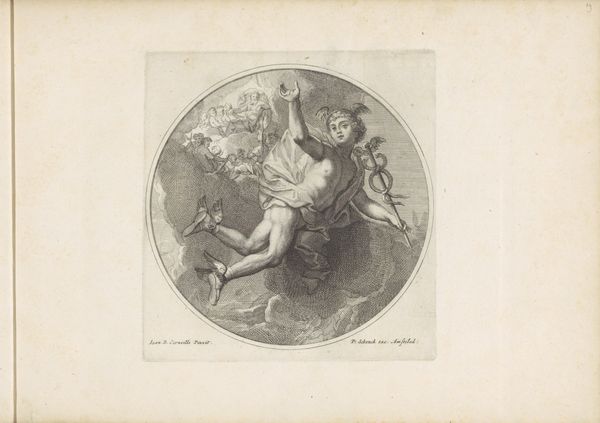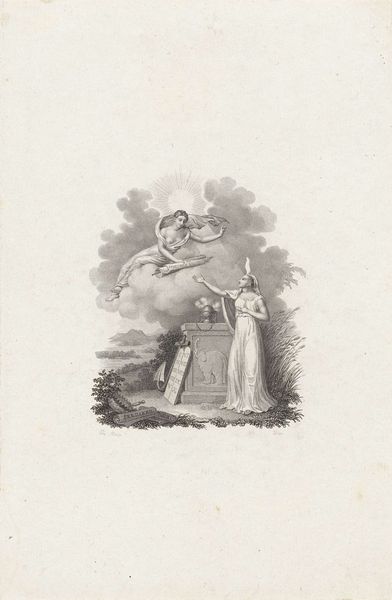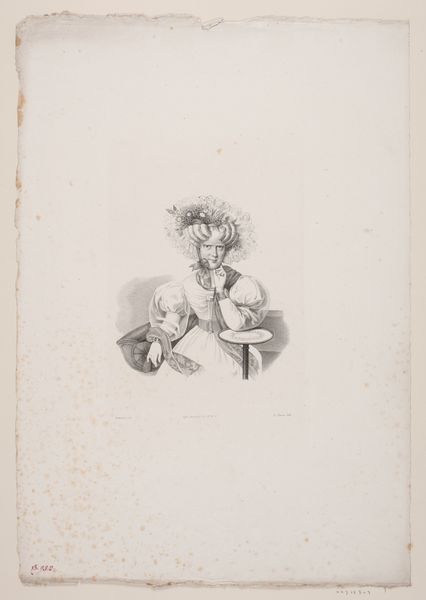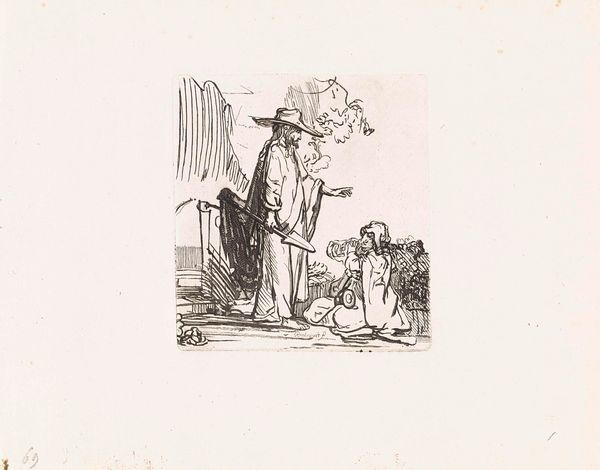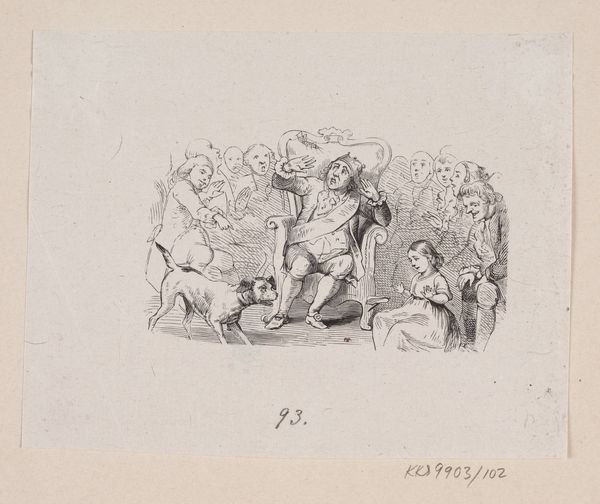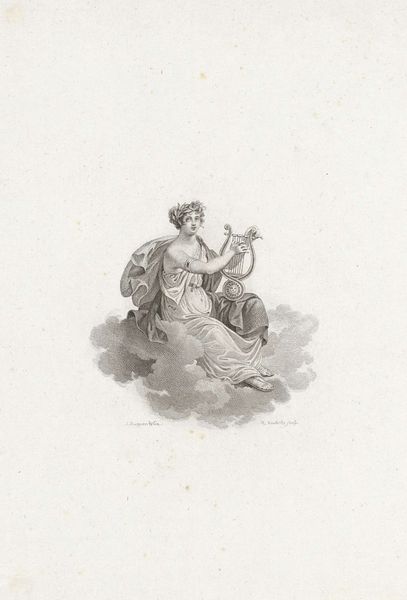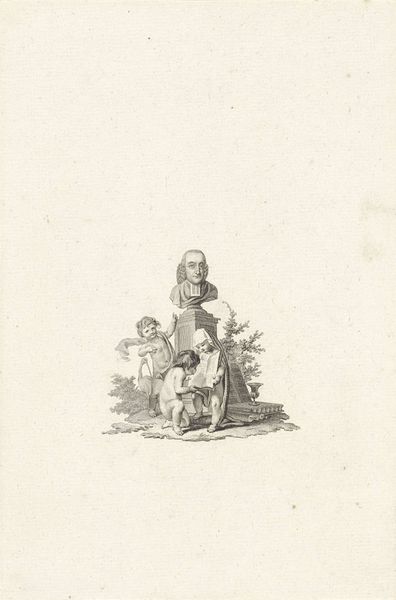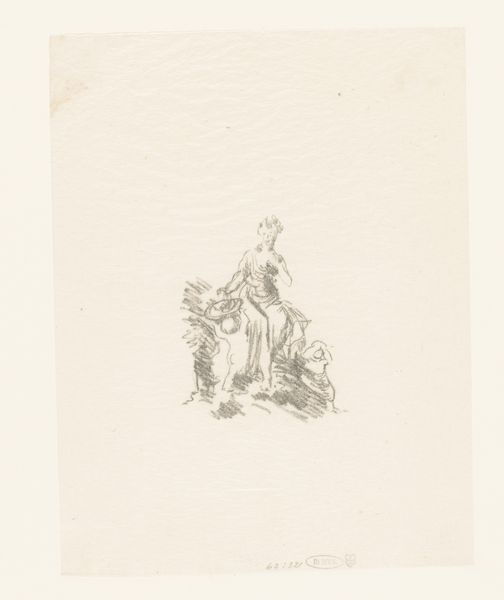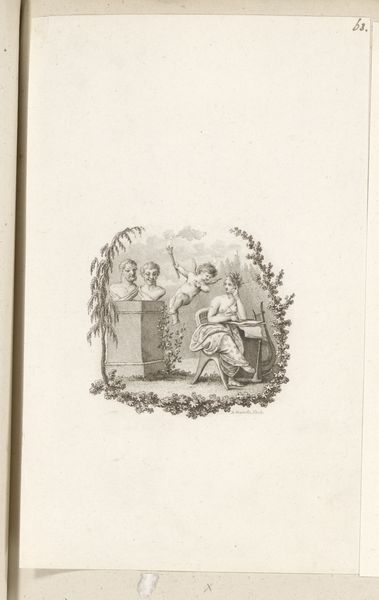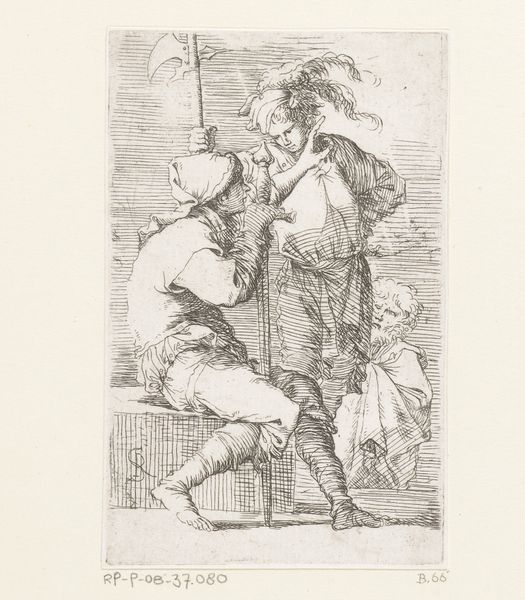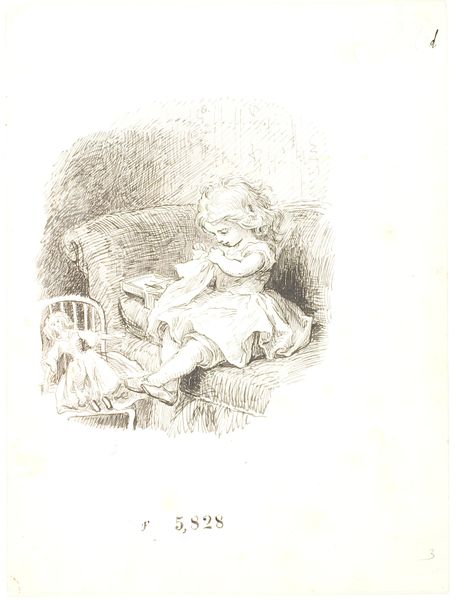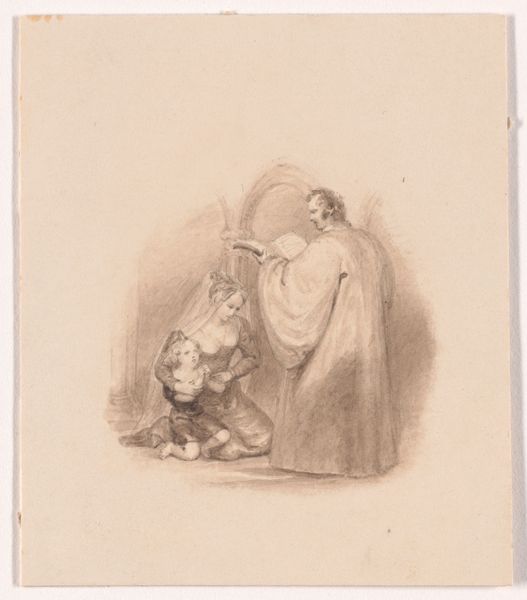
Dimensions: height 77 mm, width 83 mm
Copyright: Rijks Museum: Open Domain
Editor: We're looking at "Putto with Family Crest and Trumpet," an engraving by Reinier Vinkeles, dating from 1751 to 1816. It's a very delicate image – a winged child hovering amongst the clouds, next to a decorated crest. What do you see in this piece, beyond its obvious allegorical elements? Curator: I see a carefully constructed assertion of power, filtered through the soft lens of cherubic innocence. How does the heraldry, often associated with male lineage and authority, become feminized and, in effect, desexualized, by being presented with a Putto? Think about the gendered dynamics at play here. Does the choice to represent power with something innocent critique traditional patriarchal structures, or reinforce them? Editor: That’s interesting, I hadn’t considered the juxtaposition. So the image isn’t simply decorative. Curator: Precisely. Baroque art, even in its seemingly innocuous forms, served to uphold complex social hierarchies. The Putto becomes a carefully-positioned ambassador, softening what could be interpreted as authoritarian declarations, and legitimizing claims of family status. Do you think Vinkeles intentionally chose this cherubic figure? Editor: Perhaps. Or maybe the patron requested the putto to give a specific impression. It definitely gives a different feel than, say, a coat of arms with military symbols. Curator: Exactly. The strategic employment of seemingly innocent symbols allows Baroque art to function as propaganda through the disguise of beauty, and these kinds of prints became an affordable way for merchants to broadcast a chosen narrative of social arrival and permanence. Think of how that connects to social mobility and class anxieties of the time. Editor: It’s fascinating to consider how something so visually gentle can carry so much historical and social weight. It gives me a lot to think about regarding image making in different contexts. Curator: Agreed, exploring these intersections between art history, social structure, and contemporary theories is where art really becomes powerful!
Comments
No comments
Be the first to comment and join the conversation on the ultimate creative platform.
